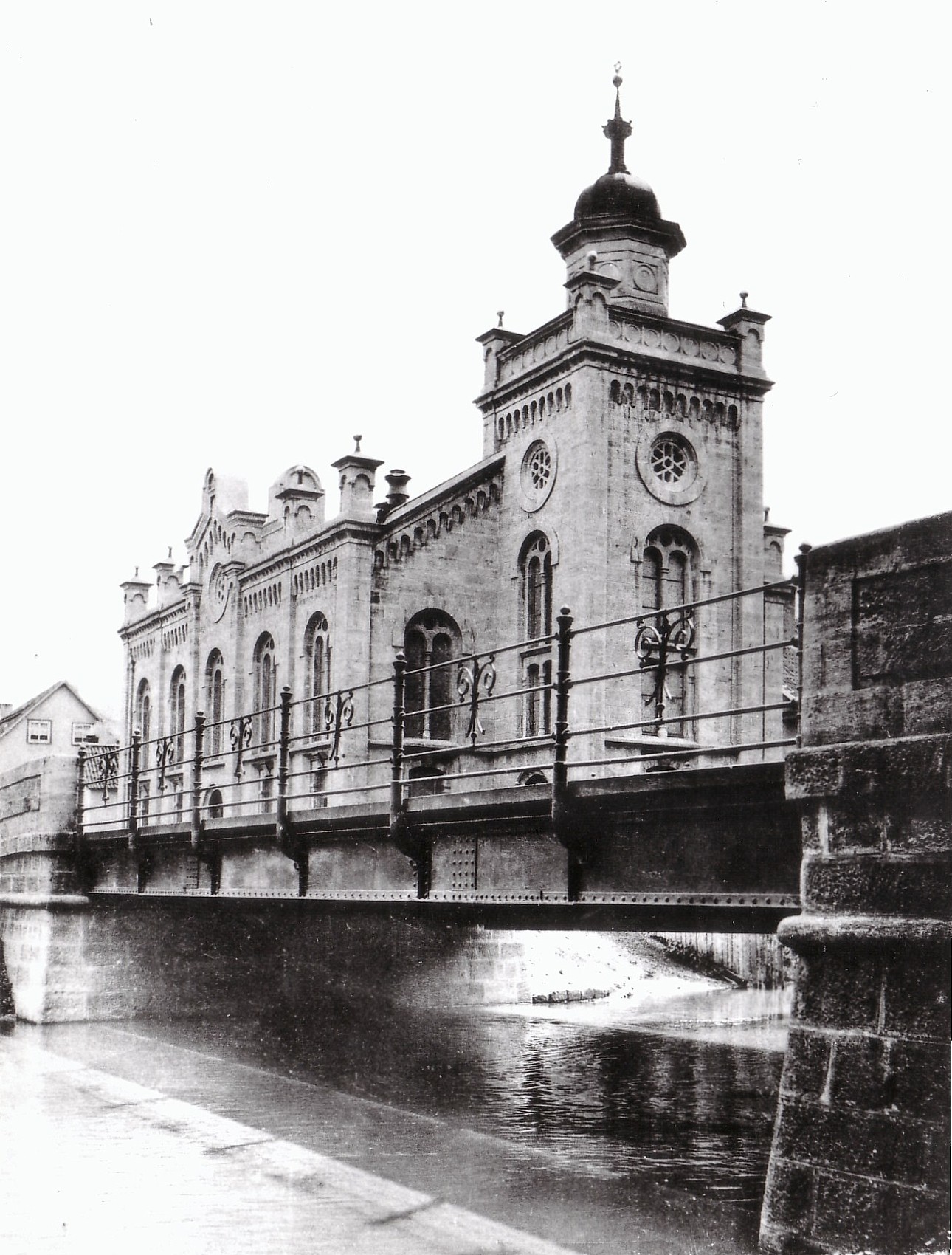 Two years after fleeing Nazi Germany as a fourteen year-old boy, Dieter Gruen learned that the beautiful synagogue in which he had had his bar mitzvah, and in which his father had been a cantor, had been burned to the ground. Though the young Dieter had safely reached the shores of the United States, the rest of his family was still living in the small town of Meiningen on the fateful eve of Kristallnacht and bore witness to the destruction of their cherished place of worship.
Two years after fleeing Nazi Germany as a fourteen year-old boy, Dieter Gruen learned that the beautiful synagogue in which he had had his bar mitzvah, and in which his father had been a cantor, had been burned to the ground. Though the young Dieter had safely reached the shores of the United States, the rest of his family was still living in the small town of Meiningen on the fateful eve of Kristallnacht and bore witness to the destruction of their cherished place of worship.
Not long thereafter, Dieter's father was arrested and sent to the Buchenwald concentration camp. Luckily, though, he was one of the few who were able to secure a release under the condition that he flee the country within twenty-four hours. The Gruens ultimately reunited and rebuilt their family in Chicago. Their synagogue, however, remained a heap of rubble and the Jewish community of Meiningen, which had persevered since at least the 13th century, ceased to exist.
Dieter Gruen went on to accomplish the extraordinary. After completing his undergraduate degree in Chemistry at Northwestern University, he was invited to join the Manhattan Project in 1944 where he was instrumental in developing the process of separating uranium isotopes. After earning his PhD from the University of Chicago in Chemical Physics and organizing scientists to prevent the proliferation of nuclear weapons, Dr. Gruen went on to a distinguished sixty-five year career as a lead scientist at Argonne National Laboratory with over four hundred peer reviewed publications and sixty patents to his name.
For all that he accomplished and built in his lifetime, however, Dr. Gruen could not rebuild the shul of his youth. And so his grandson decided to do it instead.
Dan Ostrov is a Philadelphia-based visual artist with impressive accomplishments in his own right. Well known in Philly's artistic circles for his unique wood-based installations, Dan was commissioned to build the sculpture for the basilica in Center City when Pope Francis visited Philadelphia in 2015. Not bad for the grandson of a Nazi refugee.

 He later told me that the night after we accepted his proposal he called his grandfather, Dr. Dieter Gruen (a spry 96 year-old today) and told him that he was going "to build a synagogue" which would be used daily by Jewish children. Dan said his grandfather started crying. All he could think about was the shul of his childhood and how life had, in some respects, come full circle.
He later told me that the night after we accepted his proposal he called his grandfather, Dr. Dieter Gruen (a spry 96 year-old today) and told him that he was going "to build a synagogue" which would be used daily by Jewish children. Dan said his grandfather started crying. All he could think about was the shul of his childhood and how life had, in some respects, come full circle.
.jpg) This afternoon Dan, accompanied by his grandfather and their family, formally dedicated our new Beit Midrash furniture. In doing so, our students saw for the first time how the mechitzot, made in Dan's unique style of curved wooden slats, flowed from the back of the Beit Midrash up to the aron in front. There, beneath his glass blown ner tamid, the slats part ever so gently, encouraging one to open the wooden doors of the aron kodesh. When one does, one sees the most unique feature of Dan's newest installation. Inside the aaron, on the wall behind the sifre Torah, is an image laser etched onto a backlit mirror, of his grandfather's once forgotten shul in Meiningen.
This afternoon Dan, accompanied by his grandfather and their family, formally dedicated our new Beit Midrash furniture. In doing so, our students saw for the first time how the mechitzot, made in Dan's unique style of curved wooden slats, flowed from the back of the Beit Midrash up to the aron in front. There, beneath his glass blown ner tamid, the slats part ever so gently, encouraging one to open the wooden doors of the aron kodesh. When one does, one sees the most unique feature of Dan's newest installation. Inside the aaron, on the wall behind the sifre Torah, is an image laser etched onto a backlit mirror, of his grandfather's once forgotten shul in Meiningen.
CEO of the Ades Family Foundation. Founding Head of School of the Jewish Leadership Academy. Fascinated with the Jewish future.
